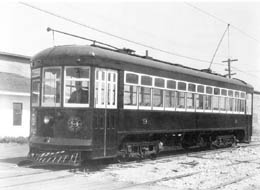On January 2, 1919, Tacoma Municipal streetcar service begins between downtown Tacoma and the tideflats. The Commissioner of Public Works takes over for the Tacoma Railway & Power Co, which had run its cars on City-built tracks since 1915, but did not renew the contract because it could not make a profit. The City's passenger operation continues to lose money and only the freight business will earn a profit.
Tacoma built streetcar tracks to the tideflats so that workers could reach jobs in the shipyards and other industries. Tacoma Railway & Power provided the streetcars and crews. The lack of fare collection boxes on the cars meant that as many as one third of the riders rode for free. After the City took over, the situation did not improve. Streetcar workers were paid for a full shift even when they only worked a few hours in the mornings and afternoons and management was slow to adjust schedules after shipyards closed at the end of World War I. The City defaulted on loan payments
One aspect of the operation was the freight operation that switched freight cars between the four mainline railroads, the Port of Tacoma, and tideflat industries. The line finally posted a profit in 1925, by which time it had become the Tacoma Municipal Belt Line.

